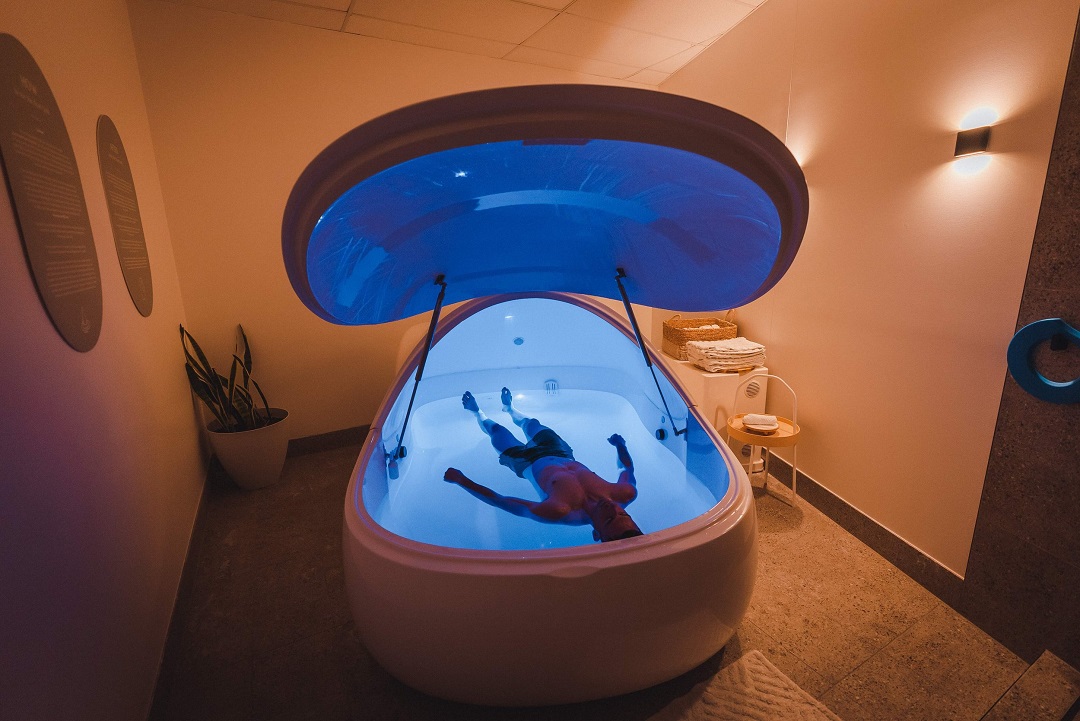So, you might have heard about this thing called a “float spa,” but what exactly is it? Well, let me break it down for you.
A float spa, also known as a sensory deprivation tank or isolation tank, is a unique wellness facility that offers floatation therapy. It typically consists of a large, soundproof tank or pod filled with warm water and Epsom salt solution, creating a buoyant environment where individuals can float effortlessly.
Now, you might be wondering, why would anyone want to float in a tank of salty water? Well, the idea behind floatation therapy is to provide a deeply relaxing and rejuvenating experience for both the body and mind. When you enter the float tank and lay back into the water, the buoyancy of the saltwater allows you to effortlessly float, relieving pressure on your joints and muscles.
Benefits Of Float Spa
But the benefits of floatation therapy go beyond just physical relaxation. Many people find that floating in a sensory deprivation tank helps to quiet the mind and reduce stress and anxiety. Without any external distractions, such as noise or light, you’re able to enter a state of deep relaxation and meditation, allowing your mind to unwind and recharge.
Float spas often provide a tranquil environment, with soft lighting, calming music, and comfortable amenities to enhance the overall experience. Some facilities even offer additional services, such as guided meditation sessions or aromatherapy, to further enhance the relaxation benefits of floatation therapy.
Overall, visiting a float spa can be a unique and rejuvenating experience for both the body and mind. Whether you’re looking to relieve stress, alleviate muscle tension, or simply relax and unwind, floatation therapy offers a peaceful sanctuary where you can escape the hustle and bustle of daily life and experience deep relaxation like never before.
FAQs (Frequently Asked Questions)
1. Is floatation therapy safe?
Yes, floatation therapy is generally considered safe for most people. However, it’s essential to follow any guidelines provided by the float spa and consult with your healthcare provider if you have any medical conditions or concerns before trying floatation therapy.
2. What should I expect during a floatation therapy session?
During a floatation therapy session, you can expect to enter a private room with a float tank or pod filled with warm water and Epsom salt solution. You’ll have the option to float nude or wear swimwear, and you can choose to keep the tank open or closed for a sensory deprivation experience. Once inside the tank, you’ll lay back into the water and relax for a predetermined amount of time, typically ranging from 60 to 90 minutes.
3. How should I prepare for a floatation therapy session?
To prepare for a floatation therapy session, it’s recommended to avoid caffeine and heavy meals beforehand, as well as shaving or waxing on the day of your appointment to prevent irritation from the saltwater. You may also want to bring a change of clothes and any personal items you may need, such as a towel or toiletries.
4. Can anyone float in a floatation tank?
Floatation therapy is generally suitable for most people, including pregnant women, athletes, and individuals with chronic pain or stress-related conditions. However, it’s essential to consult with your healthcare provider if you have any medical conditions or concerns before trying floatation therapy.
5. How often should I float?
The frequency of floatation therapy sessions depends on your individual needs and preferences. Some people may benefit from regular float sessions, while others may find occasional visits to be sufficient. It’s essential to listen to your body and adjust your float schedule accordingly.






